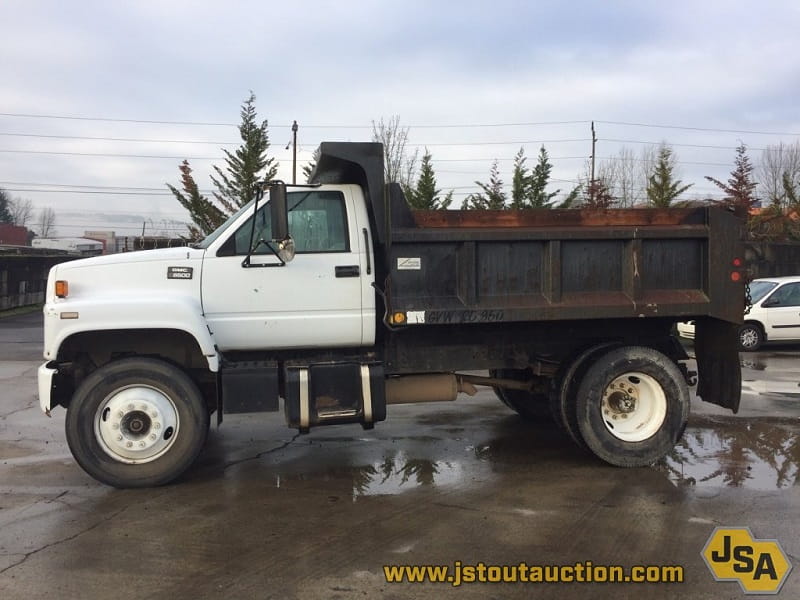When it comes to heavy-duty vehicles, dump trucks play a pivotal role in a myriad of industries. Whether on a construction site or a roadwork project, these titans of transport are integral to moving materials like gravel, sand, and debris. However, beyond their robust appearances lies a complex web of specifications, particularly concerning weight and load capacity that are essential to understand. This discussion will explore the nuances of dump truck specs, particularly focusing on their Gross Vehicle Weight Rating (GVWR) and its implications.
Before diving deep into the technical specifics, let’s unravel what GVWR actually means. The Gross Vehicle Weight Rating is the maximum operational weight that a truck can safely carry. This rating includes the weight of the truck itself, the maximum load it can haul, as well as any additional equipment or passengers. Understanding GVWR is crucial for several reasons, including safety, legal compliance, and efficient operation.
One might wonder why determining the GVWR is essential. The consequences of exceeding this rating can be severe. Overloaded vehicles can lead not only to diminished performance but also catastrophic failures, accidents, and legal ramifications. Hence, manufacturers provide precise figures that delineate safe operational limits. For instance, smaller dump trucks—like the popular 10-yard capacity models—generally have a GVWR ranging from 12,000 to 15,000 pounds. On the other hand, larger models can exceed 30,000 pounds. This diversity in capacity allows operators to select the right vehicle that aligns perfectly with their specific requirements.
Now, let’s delve deeper into the components that make up this complex rating. The curb weight of the dump truck is one aspect. This term refers to the weight of the vehicle when it’s empty, devoid of any cargo but including necessary fluids such as fuel and oil. Understanding the curb weight is pivotal as it directly influences the total load capacity. For example, a truck with a curb weight of 15,000 pounds and a GVWR of 30,000 pounds can safely carry a maximum payload of 15,000 pounds. Operators need to have clarity on these figures to avoid potential issues on the road.
The payload capacity, which is the maximum weight the dump truck can carry, is another critical aspect to consider. This number can vary from one model to another, allotting a wide range depending on the design and materials used in the truck’s construction. Different styles, such as standard dump trucks and articulated dump trucks, can have drastically different capabilities. A standard dump truck may have a payload capacity of 10 to 14 tons, whereas an articulated model may handle much heavier loads, often exceeding 20 tons.
In addition to weight considerations, the dump truck’s body design contributes to its functionality. The configuration of the truck bed—be it a standard, side, or transfer body—affects how materials are loaded and unloaded. For instance, a side dump truck might be more suitable for specific landscaping jobs, while a standard model is often preferred for construction purposes. Likewise, the presence of hydraulic systems, which are responsible for lifting the truck bed during unloading, plays a crucial role in its operational efficiency.
Speaking of efficiency, let’s shift our focus to the broader implications of understanding and adhering to dump truck specs. Owners and operators must account for local regulations regarding road weight limits. Many jurisdictions have set thresholds that, if exceeded, may incur fines or restrictions. Therefore, being well-versed in weight ratings not only improves safety but also ensures compliance with legal standards—essentially safeguarding investments in these hefty machines.
Furthermore, using the right equipment for a given job is paramount. Ignorance regarding truck specs can lead to underutilization of a truck’s potential or, conversely, ineffectiveness that may result in unplanned expenses due to inefficiency or damage. Ultimately, choosing the right dump truck is not just about meeting a project’s demand but also understanding when a lighter model may suffice to avoid unnecessary burdens.
As we navigate through the myriad types and specs of dump trucks, it becomes apparent that a closer look at the materials involved in their construction is warranted. Advances in technology have led to the incorporation of lighter yet stronger materials, enhancing overall payload capacity while simultaneously minimizing fuel consumption. Such innovations pave the way for environmentally-conscious operations, reducing the carbon footprint associated with heavy transport.
Moreover, manufacturers are now developing systems that allow for real-time monitoring of weight distribution and load capacity, providing operators with essential data at their fingertips. These digital advancements make it possible to optimize routes and mitigate risks associated with overloads proactively.
In conclusion, the weight specifications of dump trucks, particularly GVWR, are not merely numbers; they represent the very essence of operational safety, compliance, and efficiency. A deep understanding of these metrics empowers operators to make informed decisions, ensuring that every project moves forward smoothly and with minimal risk. As industries continue to evolve, embracing innovative solutions while respecting time-tested guidelines will undoubtedly enhance the future of dump trucking.
